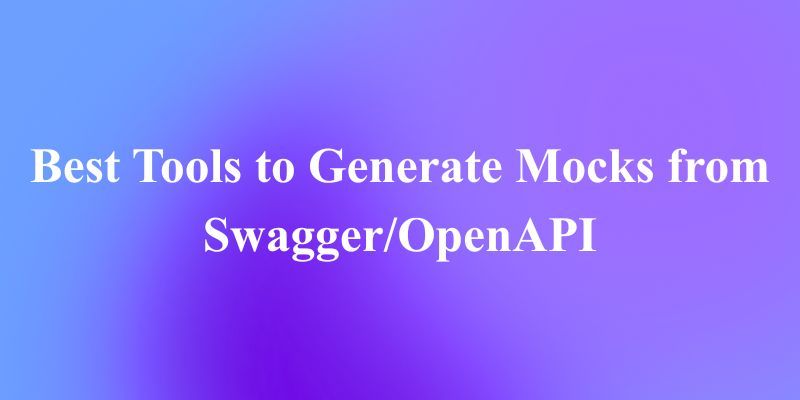Artificial intelligence (AI) has emerged as a game-changer, empowering developers with tools that accelerate coding tasks. Among the leading AI models, Claude 3.7 Sonnet from Anthropic and Gemini 2.5 Pro from Google stand out as top contenders for coding assistance. These large language models (LLMs) promise to streamline everything from writing code to debugging and generating documentation. But which one truly excels for coding? This post dives deep into a technical comparison of Claude 3.7 Sonnet and Gemini 2.5 Pro, analyzing their strengths, weaknesses, and performance in real-world coding scenarios. Whether you’re a seasoned developer or just starting out, this detailed guide will help you choose the right model for your needs.

Background: Meet the Contenders
Before jumping into the comparison, let’s establish what these models are and what they bring to the table.
Claude 3.7 Sonnet: Precision Meets Reasoning
Developed by Anthropic, Claude 3.7 Sonnet is billed as the company’s most advanced model yet. It introduces a hybrid reasoning system with two modes: standard and extended thinking. The extended mode is particularly noteworthy it displays the model’s step-by-step reasoning process, which is a boon for tackling intricate coding challenges. This model shines in areas like software engineering and front-end web development, boasting impressive results on benchmarks such as SWE-bench Verified and TAU-bench. You can access Claude 3.7 Sonnet via platforms like Claude.ai, the Anthropic API, Amazon Bedrock, and Google Cloud’s Vertex AI, making it widely available for developers.

Gemini 2.5 Pro: Power and Versatility
Google’s Gemini 2.5 Pro is the tech giant’s flagship AI model, designed to push the boundaries of coding and beyond. It features advanced “thinking capabilities,” allowing it to reason through problems before delivering answers. This enhances its accuracy and makes it a strong performer in coding tasks. With native multimodal support, Gemini 2.5 Pro can process text, images, audio, videos, and massive datasets perfect for developers working on diverse projects. Its context window is equally impressive, handling up to 1 million tokens (expandable to 2 million), which means it can manage large codebases with ease. You can tap into Gemini 2.5 Pro through Google AI Studio and other Google Cloud services.

Coding Performance: A Head-to-Head Showdown
Now, let’s get technical and compare how Claude 3.7 Sonnet and Gemini 2.5 Pro perform in key coding tasks. From writing code to debugging and documentation, each model brings unique strengths to the table.
Code Generation: Speed vs. Precision
When it comes to generating code, both models excel, but their approaches differ. Gemini 2.5 Pro earns high marks for its speed and efficiency. Developers have tested it on tasks like building dynamic web apps in Next.js or creating agent-based workflows, and it often delivers functional code faster than Claude 3.7 Sonnet. For example, in a challenge to code a real-time collaborative whiteboard, Gemini 2.5 Pro produced a working solution with fewer revisions. However, some users report occasional bugs like uncompileable code or odd special characters suggesting you’ll need to double-check its output.
In contrast, Claude 3.7 Sonnet prioritizes precision over speed. Its extended thinking mode breaks down complex logic into clear, actionable steps, making it ideal for tasks requiring accuracy. Take a 3D Rubik’s Cube visualizer in JavaScript using Three.js as an example: Claude 3.7 Sonnet delivered a cleaner, more understandable solution compared to Gemini 2.5 Pro. If you value code that’s easy to maintain or teach, Claude’s approach wins here.
Debugging and Refactoring: Finding and Fixing Flaws
Debugging is where both models shine, albeit in different ways. Gemini 2.5 Pro leverages its massive context window to analyze sprawling codebases, quickly spotting bugs in large projects. Its multimodal capabilities add another layer of usefulness upload a screenshot of an error, and it can pinpoint the issue faster. This makes it a go-to for developers working on extensive applications where context is king.
Meanwhile, Claude 3.7 Sonnet dominates in refactoring. Its reasoning prowess allows it to suggest optimizations with detailed explanations. In a test refactoring a Python script for better performance, Claude not only improved the code but also explained why each change mattered think of it as a mentor guiding you through best practices. For smaller, logic-heavy projects or when you need to learn as you go, Claude takes the lead.
Technical Documentation: Clarity vs. Richness
Writing documentation is a chore, but both models make it easier. Claude 3.7 Sonnet focuses on clarity, producing natural-language explanations that break down complex code into digestible chunks. This is perfect for teams aiming to maintain readable docs or onboard new developers. Its knack for simplifying tricky concepts without losing technical depth is a standout feature.
On the flip side, Gemini 2.5 Pro brings richness to documentation. Thanks to its multimodal nature, it can generate text alongside visuals like diagrams or even video snippets. Imagine documenting a machine learning model Gemini could include a graph of data distributions or a model architecture sketch, elevating the doc’s value. If your audience thrives on multimedia, Gemini has the edge.
Benchmark Comparisons: Numbers Don’t Lie
Benchmarks offer a standardized lens to evaluate these models. Here’s how Claude 3.7 Sonnet and Gemini 2.5 Pro stack up on coding-related tests.

SWE-bench Verified: Software Engineering Prowess
SWE-bench Verified measures a model’s ability to solve real-world software engineering problems. Claude 3.7 Sonnet scores 70.3% in extended thinking mode, edging out Gemini 2.5 Pro’s 63.8%. This suggests Claude handles complex coding tasks with a bit more finesse, especially when reasoning through tricky issues.
GPQA Diamond: Logical Reasoning
The GPQA Diamond benchmark tests graduate-level physics questions, which demand strong logical skills relevant for coding algorithms. Claude 3.7 Sonnet hits 84.8% in extended mode, while Gemini 2.5 Pro scores 84.0%. The difference is tiny, but Claude’s slight lead hints at better deep-thinking capabilities.
AIME 2024: Mathematical Mastery
AIME focuses on mathematical reasoning, critical for algorithmic coding. Here, Gemini 2.5 Pro pulls ahead with a stellar 92.0%, compared to Claude 3.7 Sonnet’s 80.0%. If your coding involves heavy math like data analysis or simulations Gemini’s strength shines through.
WeirdML Benchmark: Creative Coding
The WeirdML benchmark tests a model’s ability to write working PyTorch code for unusual machine learning tasks. Gemini 2.5 Pro tops this one, proving it’s adept at creative, out-of-the-box coding challenges. Claude trails here, but its focus on precision still holds value.
User Experiences: Voices from the Field
While technical benchmarks offer a snapshot of AI model performance, the real-world experiences of developers provide a deeper understanding of how Claude 3.7 Sonnet and Gemini 2.5 Pro handle coding tasks. In this section, we explore user feedback from various platforms, focusing on their encounters with these models across a range of coding problems—from debugging to API development. These voices from the field reveal each model’s strengths, weaknesses, and suitability for different scenarios.
General Impressions: What Users Are Saying
Developers have shared a mix of praise and critique for both models. Gemini 2.5 Pro often stands out for its speed and adaptability. A developer on X commented, “Gemini 2.5 Pro is lightning-fast—I can churn out code drafts in seconds.” However, some users note that this speed comes at a cost, with one stating, “Gemini’s output sometimes has bugs, like missing semicolons or weird characters, which slows me down during cleanup.”
On the other hand, Claude 3.7 Sonnet earns high marks for its accuracy and thoughtful responses. A Reddit user wrote, “Claude feels like a coding mentor—it gives me reliable, well-structured solutions every time.” Another developer appreciated its ability to interpret vague prompts: “I don’t always know how to ask for what I need, but Claude figures it out and delivers.”
Coding Problem 1: Building the ChatGPT UI
A developer, shared their experience on X comparing Claude 3.7 Sonnet and Gemini 2.5 Pro in a challenge to replicate the ChatGPT UI. The task required generating a clean, functional UI with a dark theme, a centered input box, and specific icons like a microphone for voice input.

- Gemini 2.5 Pro: The model nailed the UI design almost perfectly, matching the reference image down to the layout and styling. The only minor flaw was using a microphone icon instead of a waveform for the voice input. “Gemini 2.5 Pro is the new UI king,” the user declared, impressed by its accuracy.
- Claude 3.7 Sonnet: Claude came close but stumbled on details. The colors were slightly off, some icons didn’t match, and the input box was missing entirely. “Claude’s attempt was decent but not as polished as Gemini’s,” the user noted.
Verdict: Gemini 2.5 Pro clearly outperformed Claude in this UI design task, delivering a near-perfect result with minimal adjustments needed.
Coding Problem 2: Solving a LeetCode Problem
Using Claude 3.7 Sonnet and Gemini 2.5 Pro to tackle a LeetCode problem involving finding the median of two sorted arrays. This algorithmic challenge required merging arrays efficiently and handling edge cases like arrays of different lengths.
- Gemini 2.5 Pro: The model provided a solution using a binary search approach, which was optimal with a time complexity of O(log(min(m,n))). However, the code had a small bug in handling edge cases, such as when one array was empty, requiring the user to fix it manually. “Gemini got me 90% there, but I had to debug it,” the user said.

- Claude 3.7 Sonnet: Claude also opted for a binary search solution but included detailed comments explaining each step. It handled edge cases correctly from the start. “Claude’s solution was ready to submit—it even explained why binary search was the best approach,” the user reported.

Verdict: Claude 3.7 Sonnet took the lead here, offering a more reliable and educational solution for this algorithmic problem.
Coding Problem 3: Refactoring Legacy Code
Refactoring old codebases can be daunting. A user tackled a messy JavaScript app, aiming to split it into modular components.
- Gemini 2.5 Pro: The model offered a high-level refactoring plan but skimped on specifics. “It gave me an outline, but I had to figure out the code myself,” the user explained.
- Claude 3.7 Sonnet: Claude provided a step-by-step guide with sample code for key modules. “It was like having a pair-programming buddy,” the user said. “The examples made the process smooth.”
Verdict: Claude’s detailed support outclassed Gemini’s more abstract advice.
Pricing and Accessibility: Practical Considerations
Cost and availability can tip the scales when choosing a model.
Claude 3.7 Sonnet operates on a subscription model via Claude.ai or API access through Anthropic, Amazon Bedrock, and Google Cloud. It costs $3 per million input tokens and $15 per million output tokens reasonable but potentially pricey for heavy users.

Gemini 2.5 Pro is accessible via Google AI Studio and Google Cloud, with a free tier that’s generous for small projects. While exact pricing isn’t public here, it’s reportedly 36 times cheaper than Claude for input and output tokens. For budget-conscious developers, Gemini’s cost advantage is hard to ignore.

Testing APIs with Apidog: A Practical Guide
While AI models like Claude 3.7 Sonnet and Gemini 2.5 Pro can significantly enhance your coding capabilities, having the right tools to test and manage your APIs is equally crucial. Enter Apidog, a powerful platform designed to streamline API design, testing, and documentation.

API testing is a critical aspect of software development, ensuring that your application’s components communicate correctly and handle data as expected. Whether you’re building a simple web app or a complex microservices architecture, thorough API testing helps catch bugs early, improves reliability, and enhances overall code quality. With Apidog, you can simplify this process and integrate it seamlessly into your development cycle.
How to Test APIs Using Apidog: A Step-by-Step Guide
Here’s a straightforward guide to testing APIs with Apidog:
Create a New Project:
Start by creating a new project in Apidog. This will serve as the workspace for all your API testing activities, keeping everything organized.

Define Your API:
Use Apidog’s intuitive interface to define your API endpoints. Specify the HTTP methods (GET, POST, PUT, DELETE, etc.), parameters, headers, and expected responses. This step ensures that your tests are aligned with your API’s design.

Set Up Test Cases:
For each endpoint, create detailed test cases. Apidog allows you to configure request bodies, authentication details, and even custom scripts for advanced testing scenarios.

Execute your test cases individually or in batches. Apidog sends requests to your API and captures the responses, making it easy to verify if everything is working as expected. Review the test results to identify any failures or unexpected behaviors. Apidog provides detailed logs, status codes, and error messages, helping you quickly debug and resolve issues.
Generate Documentation:
Once your APIs are tested and stable, use Apidog to generate comprehensive, user-friendly documentation. This can be shared with your team or published for external developers and stakeholders.

Supercharge Your Workflow with Apidog
Whether you’re leveraging Claude 3.7 Sonnet or Gemini 2.5 Pro to accelerate your coding, Apidog is the perfect companion to ensure your APIs are robust, reliable, and well-documented. Its user-friendly interface, powerful testing capabilities, and comprehensive feature set make it an essential tool for developers at any stage of their project.
To experience the full power of Apidog and streamline your API testing process, . Take your coding to the next level with the right tools by your side.
Conclusion: Which Model Wins for Coding?
So, which model is best for coding, Claude 3.7 Sonnet or Gemini 2.5 Pro? It depends on your needs:
- Choose Claude 3.7 Sonnet if you prioritize precision, detailed reasoning, and clear explanations. It’s perfect for complex problem-solving or teaching scenarios.
- Opt for Gemini 2.5 Pro if you need speed, large-scale project support, or multimodal features. It’s a powerhouse for big codebases and creative tasks.
- Consider cost: Gemini’s lower price and free tier make it more accessible.
No matter which you pick, pair it with Apidog to streamline your workflow. This free tool simplifies API design, testing, and docs download it today and take your coding to the next level.
![[Compared] Claude 3.7 Sonnet vs Gemini 2.5 Pro for Coding, Which is Better?](https://assets.apidog.com/blog-next/2025/03/Is-Apidog-Better-Than-Postman-21.png)


